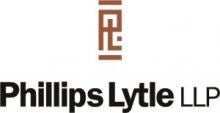While New York State’s Prompt Payment Act (“PPA”) provides a potential workaround for the invalid pay-when-paid provisions that appear in many construction contracts, a recent decision from the State’s Appellate Division narrows, if not closes, that loophole.
In the construction industry, it is common for a general contractor to include “pay-when- paid” or “pay-if-paid”1 clauses in its contracts with subcontractors, essentially allowing the general contractor to avoid paying its subcontractors for their work until it receives payment from the owner and forcing subcontractors to assume the risk that the owner will fail to pay the general contractor. In 1995, New York State’s highest court in West- Fair Electric Contractors v. Aetna Casualty & Surety Co. invalidated such practice, declaring that pay-when-paid provisions are void and unenforceable as contrary to public policy. 87 N.Y.2d 148, 159 (1995). The Court found that pay-when-paid provisions prevent a subcontractor from enforcing its rights under New York State’s Lien Law because if the owner failed to pay the general contractor, then payment to the subcontractor would never be due, which is a “necessary element of the subcontractor’s cause of action to enforce its lien against the owner.” Id.; see also N.Y. Lien Law § 34 (holding that “[n]otwithstanding the provisions of any other law, any contract, agreement or understanding whereby the right to file or enforce any lien created under article two is waived, shall be void as against public policy and wholly unenforceable”).
Despite the holding in West-Fair, contractors continue to include pay-when-paid in contracts, and until recently the PPA offered a workaround to validate these seemingly invalid provisions.
In 2002, the New York State Legislature passed the PPA in order to facilitate the prompt payment to contractors and subcontractors. N.Y. Gen. Bus. Law § 756-a. The PPA contains a provision, however, that seems to provide an alternative to the disallowed pay-when-paid provision in construction contracts. Section 756-a(3)(b)(i) states:
Unless the provisions of this article provide otherwise, the contractor or subcontractor shall pay the subcontractor strictly in accordance with the terms of the construction contract. Performance by a subcontractor in accordance with the provisions of its contract shall entitle it to payment from the party with which it contracts. Notwithstanding this article, where a contractor enters into a construction contract with a subcontractor as agent for a disclosed owner, the payment obligation shall flow directly from the disclosed owner as principal to the subcontractor and through the agent.
N.Y. Gen. Bus. Law § 756-a(3)(b)(i) (emphasis added).
While the provision does clearly state in its second sentence that a subcontractor is entitled to payment “from the party with which it contracts,” the third sentence concerning agency seems to provide a way around the West-Fair Court’s clear mandate that pay-when-paid provisions are void, as long as the contractor is acting as an “agent for a disclosed owner.” Id. In that situation, the PPA arguably mandates that the payment obligation to the subcontractor flows directly from the owner, and not the general contractor. This principal-agent relationship is merely a reflection of the common law rule that an agent for a disclosed principal “will not be personally bound unless there is clear and explicit evidence of the agent’s intention to substitute or superadd his personal liability for, or to, that of his principal.” Mencher v. Weiss, 306 N.Y. 1, 4 (1953). Theoretically, the agency exception should not impair a subcontractor’s Lien Law rights because it can still file and enforce a mechanic’s lien, but it shifts the responsibility for payment from the general contractor to the owner, giving the general contractor a defense to the subcontractor’s nonpayment claims.
Until recently, not much has been said about the PPA’s agency provision. In March 2022, however, New York’s Appellate Division in Bank of America, N.A. v. ASD Gem Realty LLC rejected a general contractor’s claim that it was acting as an “agent for a disclosed owner” pursuant to § 756-a(3)(b)(i), holding that the general contractor was liable to the subcontractor regardless of whether or not the owner had paid the general contractor. 205 A.D.3d 1, 8-12 (1st Dep’t 2022). In that case, an owner (ASD Gem Realty LLC and ASD Diamond Inc., together “ASD”) hired a general contractor (Sweet Construction Corp. or “Sweet”) to perform construction and renovation work at its property. Id. at 3. ASD solicited proposals for the installation of partitions for the project and selected plaintiff Arenson Office Furnishings, Inc. (“Arenson”), who then entered into a subcontract with Sweet. Id. The subcontract provided that “[a]ll work to be performed pursuant to the ATTACHED SCOPE LETTER . . . and ‘SCC General Requirements.’” Id. at 4 (alterations in original). The Scope Letter contained the following clause: “Subcontractor understands that Contractor is acting as an agent for the Owner, and agrees to look only to funds actually received by the Contractor (from the Owner) as payment for the work performed under this Subcontract.” Id.
As it so happened, ASD ran into financial difficulties and Arenson did not receive payment from either ASD or Sweet. Id. at 5. While Arenson filed a mechanic’s lien against the property and commenced a lien foreclosure action, there was no surplus available to pay either Sweet or Arenson after the construction lender obtained a judgment of foreclosure and conducted a foreclosure sale of the property. Id. Arenson then filed a complaint against Sweet for violation of the PPA, claiming Sweet failed to pay Arenson for the stated reason that Sweet had not been paid by ASD. Id.
In response, Sweet argued that it was not liable to Arenson because Sweet was acting as an agent for ASD; Sweet was merely complying with ASD’s directive to hire Arenson. Id. Sweet claimed ASD told Sweet that ASD would be responsible for paying Arenson and, citing the subcontract’s payment language, claimed that Arenson could only expect payment from ASD, not Sweet. Id. Sweet also relied on § 756-a(3)(b)(i) of the PPA, arguing that pursuant to the third sentence, Sweet was only an agent for a disclosed owner and therefore was exculpated from personal liability. Id. at 6. Sweet argued that the agency provision of this section negated the second sentence of the provision (entitling the subcontractor to payment from “the party with which it contracts”). Id. (quoting N.Y. Gen. Bus. Law § 756-a(3)(b)(i)).
The lower court rejected those arguments, holding that the subcontract language was an unenforceable pay-when-paid clause and that the exception in the PPA at § 756- a(3)(b)(i) clearly provides (in its second sentence) that a subcontractor is entitled to payment “from the party with which it contracts” (and Sweet contracted with Arenson). Id. The lower court also explained that the PPA and related case law demonstrate that an unpaid subcontractor is entitled to multiple sources of payment, perhaps explaining any conflict between the second and third sentence of § 756-a(3)(b)(i). Id. at 6.
The Appellate Division in turn held that the lower court correctly determined that Sweet was not an agent for an undisclosed principal. Id. at 7. The Court relied on the fact that the signature line in the subcontract did not “indicate that Sweet signed the contract as agent on behalf of a disclosed principal or reflect any limitations,” and that the referenced SCC General Requirements included indemnifying Sweet, obtaining liability insurance in Sweet’s favor, and recognizing Sweet’s authority to issue safety violations and correct unsafe conditions. Id. at 7-8. The Court “reject[ed] Sweet’s attempt to divide a single contract into one that creates an agency for purposes of payment but not for any other purpose,” reaffirming “that the ‘dual roles’ of general contractor and agent are inconsistent.” Id. at 8 (quoting Blandford Land Clearing Corp. v. Nat'l Union Fire Ins. Co. of Pittsburgh, Pa., 260 A.D.2d 86, 95 (1st Dep’t 1999)).
As for the PPA, the Court also held that § 756-a(3)(b)(i) was inapplicable because, as explained, Sweet was not ASD’s agent and its interpretation of that provision “overlooks the entire purpose of the PPA and turns the statute on its head.” Id. at 11. The Court explained that the provision is actually designed to provide the subcontractor “with the panoply of statutory benefits and remedies that ordinarily would have inured to the contractor had the contractor acted on its own behalf, instead of as the owner’s agent,” and therefore, the “subcontractor is entitled to all of the article's benefits and remedies that would have ordinarily flowed to the contractor.” Id. at 11-12. The Court pointed out that the principles of West-Fair applied to this case as well, even if West-Fair did not involve an agent relationship, because the central issue in both cases was forcing a subcontractor to assume the risk of an owner’s failure to pay its contractor. Id. at 12.
Therefore, despite clear language that Sweet was acting as an agent for the Owner, and despite Arenson’s agreement “to look only to funds actually received by the Contractor (from the Owner) as payment for the work performed under this Subcontract,” id. at 4, the Court found that this PPA exception to otherwise invalid pay- when-paid clauses did not apply.
In sum, contractors should be wary when attempting to use § 756-a(3)(b)(i) in conditioning payment to a subcontractor on payment from an owner, especially if the contractor is really just trying to separate its payment obligations from its general contracting responsibilities. Thus far, it appears New York State courts will not be sympathetic to such an arrangement, despite any potential carve out in the PPA.
FOOTNOTES
1 While there is a difference between “pay-when-paid” and “pay-if-paid,” for purposes of this article, the two phrases are used interchangeably to mean a condition in a contract in which payment by the contractor to the subcontractor is contingent on the owner first paying the contractor. See Bank of Am., N.A. v. ASD Gem Realty LLC, 205 A.D.3d 1, 6 n.3 (1st Dep’t 2022).




 />i
/>i
